Many users are trying to permanently delete files on Windows 10. Have you ever been that user? No. But I've been it and in this post, we'll demonstrate how to permanently delete files on Windows 10.
The purpose of 'Recycle Bin' is to save you from any accidental deletion. This feature is already a standard on any device that stores information, including smartphones. However, the files deleted and sent to the Recycle Bin are not freeing up space on the hard drive.
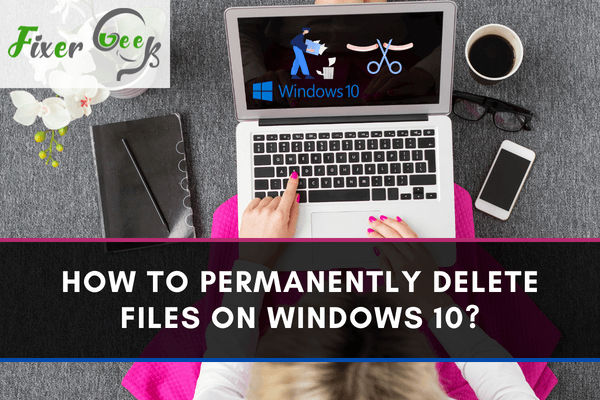
To convert the deleted file into free space, you need to delete them permanently. This means that you won't see the Recycle Bin file or in any folder anymore unless you utilize a third-party recovery tool. To delete files permanently, here are the steps you can follow.
How To Permanently Delete A File In Windows 10?
Deleting Using Recycle Bin
- Select a file to delete. Make sure that it is NOT a system file, a running and important application, or any usable files within a particular software folder. Press 'Delete' on the keyboard or right-click on the file and select 'Delete.'
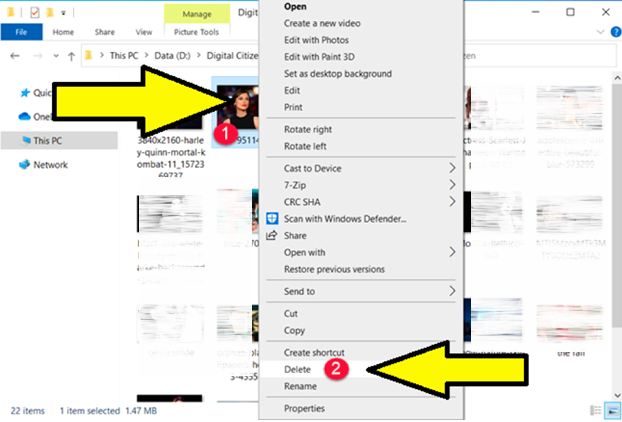
- Click on 'OK.'
- Go to the Recycle Bin tool. Find the file recently deleted.
- Delete the file while inside the Recycle Bin and click on 'OK.'
- To remove all files in the Recycle Bin, right-click on the icon and select 'Empty Recycle Bin.'
Deleting Using Keyboard Shortcuts
- Select the appropriate file or multiple files to be deleted.
- To delete without having them moved to the Recycle Bin, press 'Shift' and 'Delete' on your keyboard at the same time.
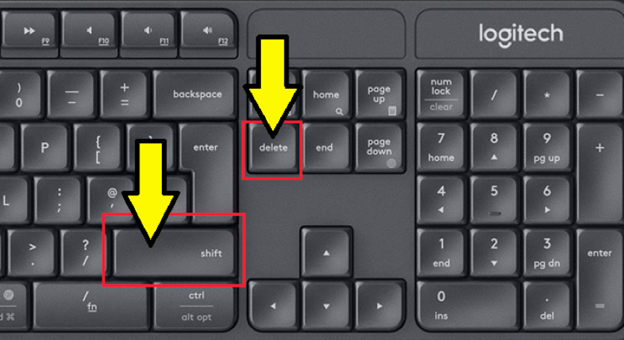
- You can review your decision since a confirmation window will appear, prompting if you intend to delete it permanently. If it is final, then select 'Yes.'
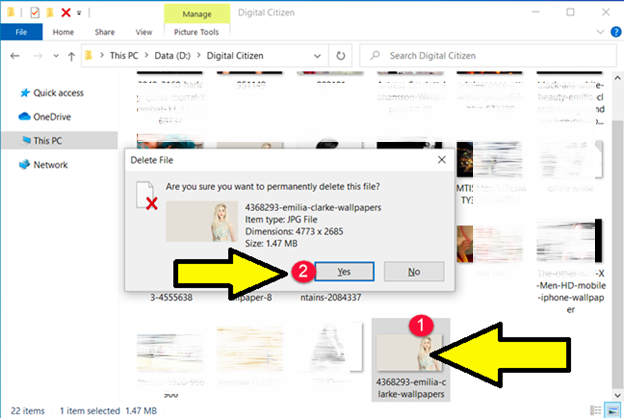
Deleting From File Explorer's Ribbon
- Select the appropriate file or multiple files to be deleted.
- Tap the 'Home' tab on the ribbon. Choose the button 'Delete' if you want to move them to the Recycle Bin.
- To delete the file permanently, instead of clicking the button 'Delete,' click on the arrow below the said button and select 'Permanently delete.'

Deleting Using Command Prompt Or Powershell
- Both PowerShell and Command Prompt can be used to delete a file permanently. Open either of the two based on your preference. Enter the command: del "path to file." An example is del "D:Digital Citizensample.jpg" to delete the file 'sample.jpg' located in the folder 'Digital Citizen' in drive D.
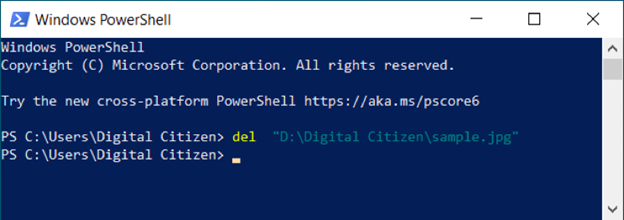
- To execute the command, press 'Enter' on the keyboard. The file is now deleted without requiring confirmation.
- The command can be utilized with several parameters. The parameter /f enables force deletion even in deleting a read-only file that is not normally deleted. To apply this parameter, type in: del /f "path to file."
- Always press 'Enter' to execute the command. Whatever is being deleted using this process, it will not be moved to the Recycle Bin.
Summary: Permanently delete files on Windows 10
- Make a backup of the files you want to delete, so you don't lose them permanently.
- Create a system restore point.
- Open the Recycle Bin, and find the file you want to delete.
- Select the file or folder you want to delete.
- Right-click on the selected file, and select "Delete" from the drop-down menu.
- Click "Yes" to confirm that you want to delete the files from your computer.
- Select File Explorer from the taskbar, and open the folder with the files you want to delete (e.g., Documents, Downloads).
- Select all of the files in the folder that you want to delete.
- Right-click on one of your selected files, and click "Delete" from the drop-down menu that appears.
- Click "Yes" when prompted to confirm that you want to permanently delete these files.
Conclusion
Permanently deleting files is a practice only to those familiar with a computer that can conveniently do. If you are a beginner and have little understanding about 'back-up,' better not practice permanently deleting files so that you can avoid any accidental or unwanted deletion.
If such a bad scenario comes true, third-party tools, like Recuva, can further retrieve a recently 'permanently' deleted file. Such a process is left to the computer savvy. The main purpose of deleting a file permanently, aside from burying a secret, is to free more storage space for your hard drive as quickly as possible.